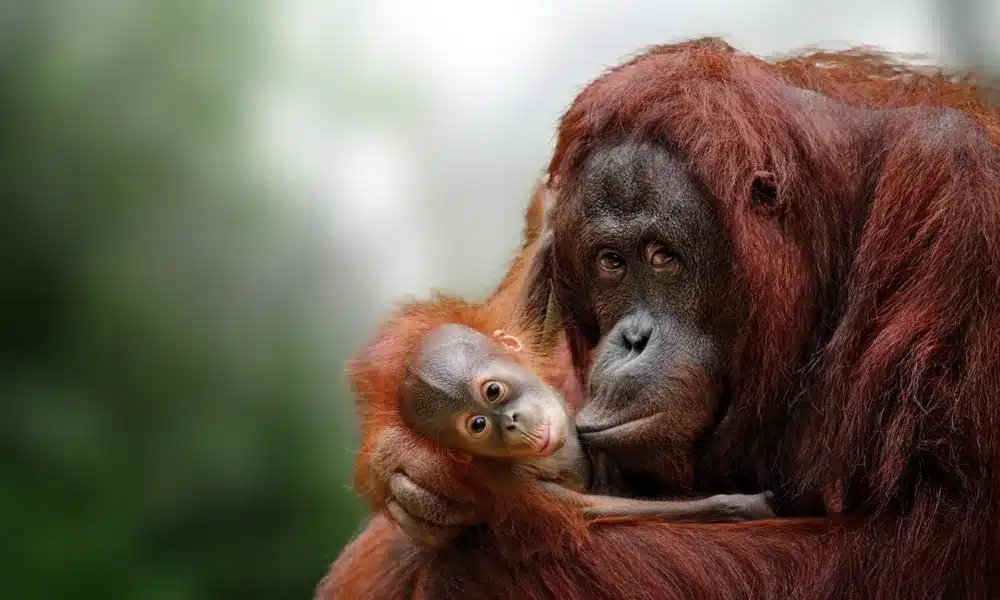Primatology is the scientific study of the primate order of mammals, which draws from areas such as biology, behavioural studies, anatomy and physiology and anthropology. The Primates order includes monkeys, gorillas, lemurs, tarsiers, chimpanzees, orangutans, gibbons and more.
This 100 hour primatology course covers taxonomy, physiology, psychology, husbandry (diet, care, environmental requirements), health as well as examining breeding programs designed and management and needs of primates in captivity.
This course is suitable for:
- wildlife managers
- zoo keepers
- conservationists
- vets
- anyone with a passion for primates and wildlife
Course Aims:
- To understand the taxonomy, biology and management of primate animals both in captivity and the wild.
- Discuss the nature and scope of our knowledge of primate animals.
- Describe a variety of different species from the suborder Strepsirhini.
- Describe a variety of different species from the suborder Haplorhini.
- Explain the dietary requirements for different primates.
- Explain the management of the physical wellbeing of primates.
- Explain the psychology of primates and their natural behaviour.
- Explain the management of the psychological wellbeing of primates in captivity.
- Explain breeding programmes for managing the conservation of primates.
- Explain the conservation of a range of primates.
- Explain the management of primates in captivity.
There are 10 Lessons in this course:
1. Introduction to Primates – Scope, Nature, Anatomy & Physiology, Evolution and Taxonomy
-
- Order Primates
- Distinguishing Characteristics of Primates
- Taxonomy of Primates
- New World and Old World Monkeys
- Anatomy and Physiology
2. The Strepsirhines
-
- Family Daubentoniidae
- Family Lorisidae (or Loridae)
- Family Galagidae (syn. Galagonidae)
- Family Lemuridae
- Extinct Families
- Examples Of Living Groups
3. The Haplorhines
-
- Family Cebidae
- Family Tarsiidae
- Family Callitrichidae
- Family Atelidae
- Family Cercopithecidae
- Family Hylobatidae
- Family Pongidae
- Family Hominidae
- Tarsiers
- Baboons
- Drills
- Macaques
- Mangabey Monkeys
- Vervet Monkeys
- Marmosets
- Capuchins
- True Spider Monkeys
- Guenon Monkeys
- Patas Monkeys
4. Diet and Nutrition
-
- Nutritional Requirements of Primates
- Physiological Adaptations to Different Diets
5. Health – Illness, Pests and Diseases
-
- Exercise
- Observation and Assessment of Health or Condition
- Common Illnesses
- Pathogenic
- Disease and Primate Conservation
- First Aid on Humans Exposed to NHP Injuries or Body Fluids
6. Primate Behaviour in the Wild
-
- Social Behaviour
- Social Group Composition
- What are the benefits of living in groups for primates?
- Physical Environment
- Communication
- Behaviours
7. Psychological Well-being in Primates in Captivity
-
- Recognising Abnormal Behaviour
- The Primate as a Pet
- Social Deprivation and Primates
- Abnormal Behaviour in Captivity
- Self-Harm in Primates in Captivity
- Foraging For Food
- Managing Boredom
- Learning and Training Primates
- Handling Primates
- Sedation
8. Breeding Programmes
-
- Primate Groups
- Gregarious Primates
- Fertility and Reproduction
- Breeding and Conceiving
- Pregnancy and Birth
9. Conservation in the Wild of Individual Species
-
- Conservation Status of Primate Species
- Susceptibility to Extinction
- Unique Problems
- What Animals are most Endangered?
- Recovery Programmes
10. Managing primates in Captivity
-
- Primates in captivity
- Enclosure Design
- Transporting Primates
- Reasons and Ethics of Keeping Primates in Captivity
- Risks Working With Primates

